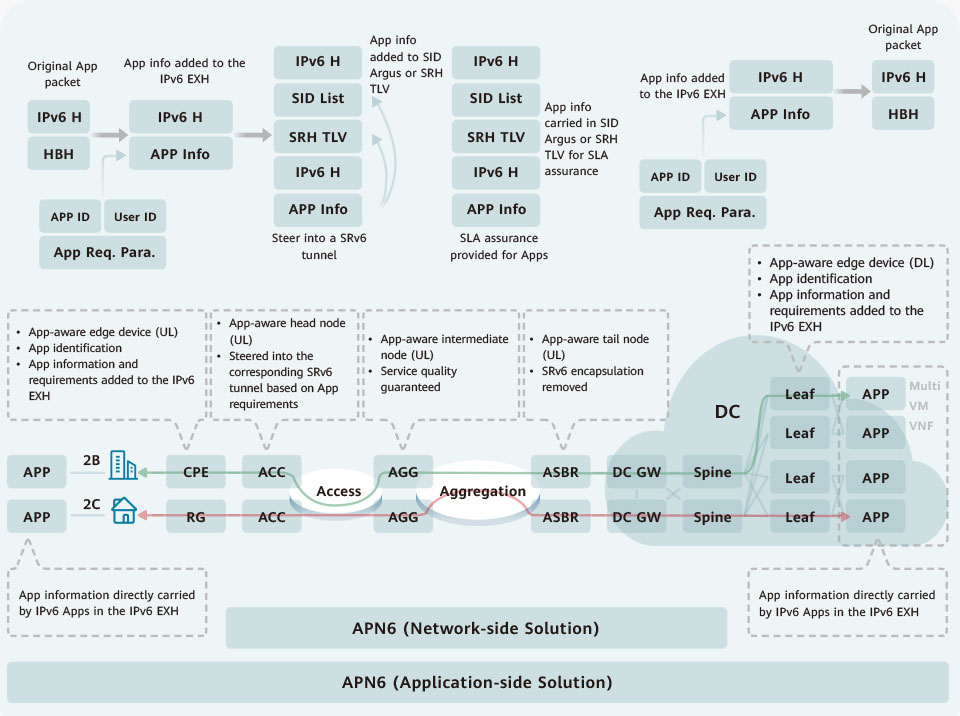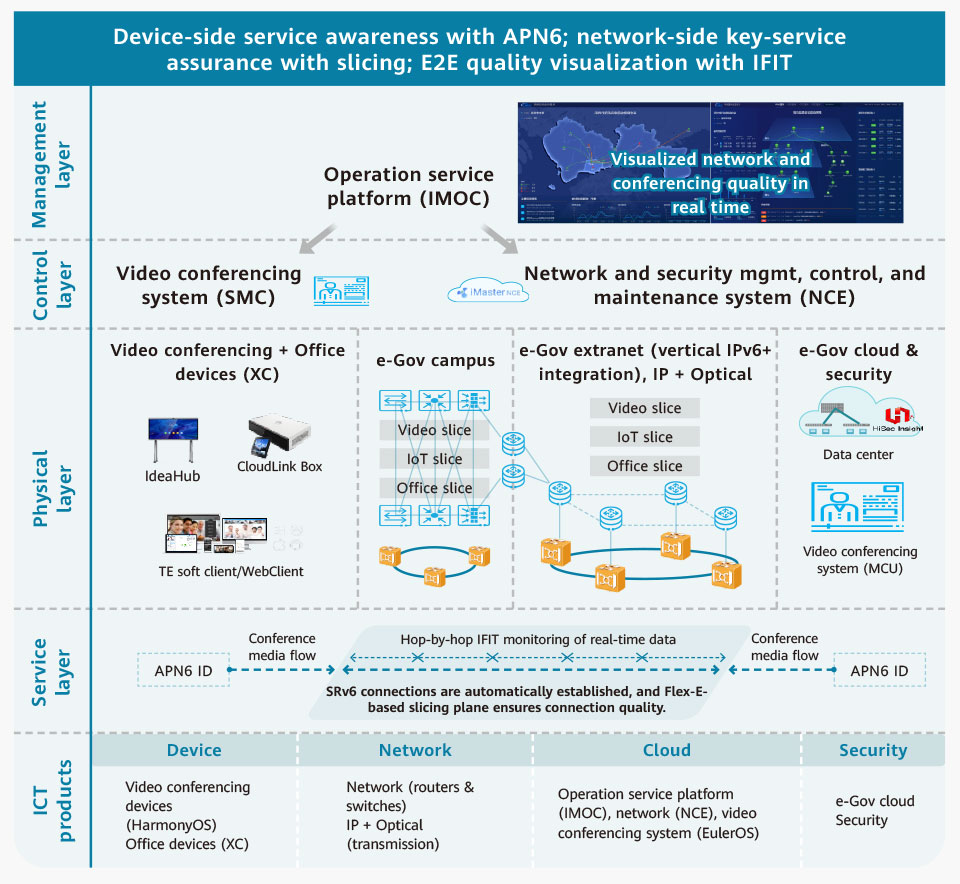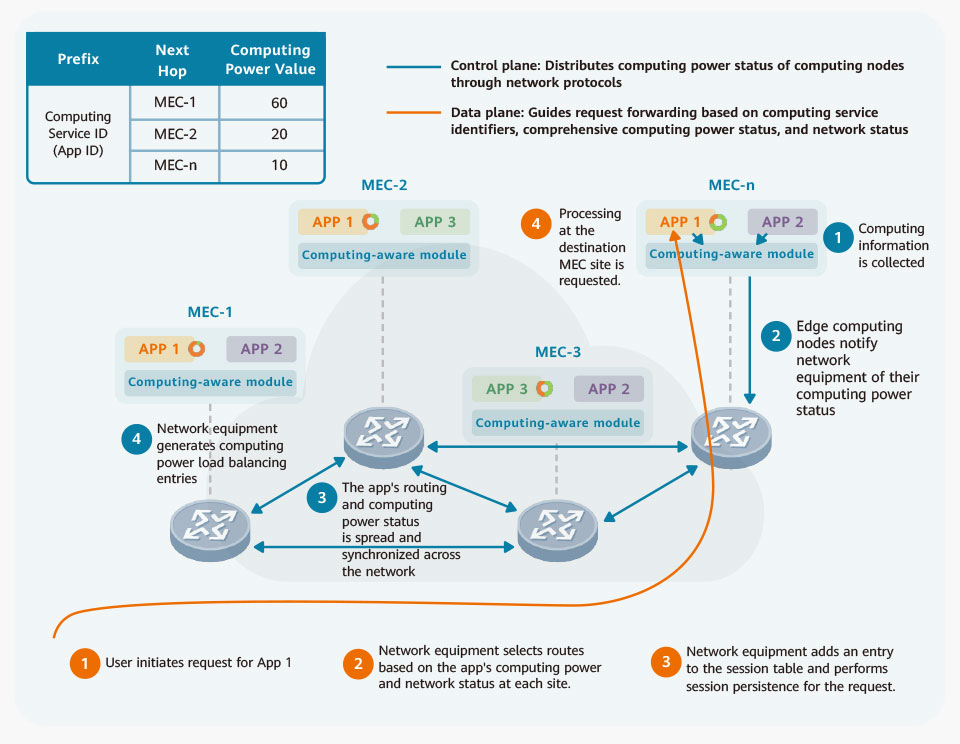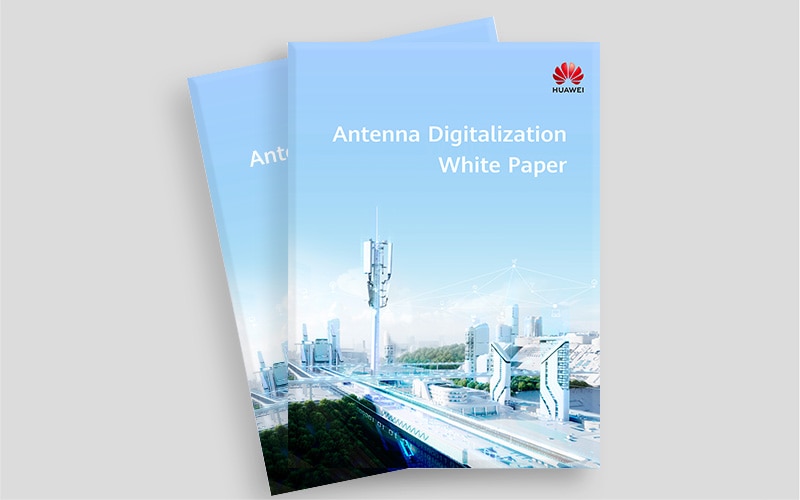New Solutions
APN6 Enables Innovation in Cloud-Network-Edge-Device Collaboration
With technological evolution, APN6 is reshaping the future of network services, and is likely to initiate a major transformation in Internet architecture. This article explores how APN6 technology is transforming the cloud-network-edge-device collaboration system, as well as its potential influence in emerging business domains.


By Li Zhenbin, Chief Protocol Expert of Huawei and Former Member of the Internet Architecture Board (IAB) of the Internet Engineering Task Force (IETF)
In the digital age, every innovation in network technology has the potential to initiate a major industry transformation. Application-aware IPv6 Networking (APN6) uses the programmable space in IPv6 packets to bring application information (parameters such as identifiers and/or network performance requirements) into a network. This makes the network aware of applications and their requirements, and enables refined network services and accurate network O&M, facilitating innovation in cloud-network-edge-device convergence.
As differentiated application requirements and diverse network technologies and services emerge, a wide range of applications designed for these requirements are being developed. Specific application scenarios include:
- Mobile interconnection applications oriented towards enhanced Mobile Broadband (eMBB) such as HD video, virtual reality, cloud storage, high-speed mobile Internet access, and AI
- Device interconnection applications oriented towards massive Machine-Type Communications (mMTC) such as environmental monitoring, smart meter reading, and smart agriculture
- Special applications oriented towards Ultra-Reliable and Low Latency Communications (URLLC) such as Internet of Vehicles (IoV), industrial control, smart manufacturing, and remote surgery
- As industries migrate to the cloud, cloud applications are used over the Internet in industries such as finance, manufacturing, education, and healthcare, as well as by individual users and households. They are reshaping industries and people's social activities, entertainment, and everyday lives. Major applications include smart cities, private networks for financial cloud, cloud-based healthcare, online education, remote offices, cloud private lines for e-commerce, and cloud gaming.
Diversified application scenarios present new challenges for network O&M. Effectively realizing refined network services and accurate network O&M is key to meeting differentiated application requirements, ensuring SLAs and promoting sustainable network development and evolution. In-depth application-network integration is a feasible path to achieving this goal and has catalyzed the emergence of the APN6 technology.
APN6 technology: Two solutions
How does application-aware IPv6 networking realize intelligent conversations between networks and applications? Key components of the APN6 framework include applications, network edge nodes, and head nodes, intermediate nodes, and tail nodes that provide network services based on APN information (Figure 1).

Figure 1: APN6 framework
Depending on where APN information is added, there are two main types of APN6 solutions, application-side and network-side, each with its own advantages and disadvantages.
In the network-side APN6 solution, application and user information is added to packets by network border equipment. The advantage of this solution is that network border equipment and network equipment providing services based on APN information are managed and controlled by the same carrier or enterprise and belong to the same trusted domain. Therefore, there are no privacy or cybersecurity issues. Its disadvantage is that the application and user information added to packets may be inaccurate or incomplete. This is because the information is added by network border equipment, instead of applications, but the equipment cannot acquire the information of certain applications.
In the application-side APN6 solution, application and user information is directly added to packets by applications. Its advantage is that it ensures the application and user information added to packets is accurate and complete. The disadvantage is that it creates privacy and cybersecurity challenges, as information must be transmitted between different trusted domains such as terminal devices, network infrastructure, and cloud services.
The IETF draft (draft-li-apn-framework) defines the application information (APN attributes) carried in APN6 packets, including application identifier information (APN IDs) and application requirement parameter information (APN parameters). An APN ID provides information that helps the network distinguish between different application flows and different users (user groups) of a certain application or certain type of applications. Such information may include Application Group IDs and User Group IDs. APN parameters optionally carry information that may include parameters related to application requirements for network performance, such as bandwidth, latency, jitter, and packet loss rate.
APN6 promotes innovation in the next-generation Internet protocol
APN6 generates significant changes to Internet architecture and promotes innovation in the next-generation Internet protocol.
Network architecture consists of three key aspects: identification, forwarding, and control. These aspects have different impacts on the network architecture. Identification can cause fundamental architecture changes as, when it changes, both forwarding and control must also change, which alters the entire architecture. However, identification changes are also extremely difficult. For example, changes in address identification from IPv4 to IPv6 require upgrade in the entire Internet infrastructure.
The US launched five Internet architecture research projects through Internet2 around 2010. These projects covered Internet architecture transformation, with the more well-known ones including Mobility First and NDN. These projects provided a wealth of valuable ideas about Internet architecture, but were ultimately unsuccessful for three reasons:
- The Internet's influence is too large, meaning it was incredibly difficult to push for transformation.
- Transformation was incompatible with the evolution of existing Internet technologies, and fully upgrading network infrastructure was too costly and time-consuming.
- Existing network software and hardware capabilities could not fully support new network technologies.
APN6 brings important changes to the network identification system. APN6 can be understood as introducing APN IDs, in addition to IPv6 addresses, so that packets contain both IP addresses and identity-like IDs. APN6 means more than just enhancement and innovation in IPv6. It provides a foundation for the next-generation Internet protocol, creating new space for Internet development. As a result, the IP technology architecture will shift from network services based on IP addresses to network services based on APN IDs or on both IP addresses and APN IDs.
The network architecture upgrade enabled by APN6 differs from the upgrade from IPv4 to IPv6. A key issue encountered during the IPv4-to-IPv6 upgrade was compatibility. Incompatibility between IPv6 and IPv4 addresses means that Internet infrastructure must be upgraded to support IPv6. This is partly why IPv6 deployment has been slow. The APN6-enabled network architecture upgrade is based on an identification system that consists of IPv6 address and APN ID, thanks to two factors:
First, the IP address system and functions are already well defined, and the address space issue is resolved by the upgrade from IPv4 to IPv6. Therefore, we should shift our efforts from an IP-address-based identification system to an identity-like APN-ID-based identification system, which involves allocation, use, and management of APN IDs, and define various protocol extensions on that basis.
Second, by learning lessons from the IPv4-to-IPv6 upgrade, incremental deployment and upgrade can be performed based on IPv6's backward compatibility mechanism. With an APN ID carried in the IPv6 extension header, an IPv6 node on the network provides services based on the APN ID if the node identifies the APN information in the packet. If the IPv6 node cannot identify the APN information in the packet, it considers the packet to be a common IPv6 packet, and forwards it according to the destination IPv6 address. This allows networks to evolve incrementally.
The combination of IPv6 addresses and APN IDs can be regarded as another expansion of the IP address space. The identifier, which was previously based on a 128-bit IPv6 address, has been lengthened to include more bits — there are now three types of APN IDs: 32-bit, 64-bit, and 128-bit. This means an APN ID used in combination with a 128-bit IPv6 address is equivalent to a 160-bit, 192-bit, or 256-bit identifier.
The network architecture upgrade in question is made possible with a new identifier–APN ID–in addition to the IPv6 address.
APN6 deployment use cases and technical value
An APN6-based video conferencing experience assurance solution has been deployed on an e-Government extranet (Figure 2). This means APN6-based solutions are already commercially viable for live networks.

Figure 2: APN6-based video conferencing experience assurance solution
Traditional video conferencing assurance is difficult as it is highly labor-intensive and networks cannot support targeted assurance services due to a lack of integration between the video system and the network, meaning faults during video conferencing are difficult to locate.
With the APN6-based video conferencing assurance solution, IPv6 packets sent by the video conferencing application carry the application ID corresponding to the video conference that needs assurance. Equipment at the border of the IP transport network can then steer the traffic into a network slice dedicated to the video service in accordance with the application ID. With resource isolation supported by IP network slices, other services will not affect traffic in the video slice, thus guaranteeing good experience for video conferencing users. Furthermore, the IP transport network performs in-situ flow information telemetry (IFIT) for applications based on application IDs to provide application-level, service-quality visualization. This makes it possible to both quickly locate issues and optimize traffic when video conferencing experience is poor.
APN6 can also be applied to scenarios such as computing-network convergence (Figure 3). Latency is critical to good XR service experience. Latency assurance depends not only on network load, but on computing power load on the edge cloud. Therefore, traffic optimization must be performed with consideration for both network load and computing power load.

Figure 3: XR experience assurance through optimization based on both network and computing power loads
A computing-aware traffic steering solution implements comprehensive scheduling based on the network and computing power loads (Figure 4). With this solution, the network must be notified of the location and application identifiers and load information of a computing service. The head node of the network forms multiple path-forwarding rules based on received information like different computing power locations and loads of the same application, points to different computing service locations, and identifies different comprehensive load information relating to network load and computing power load. When receiving new service flow packets for accessing an application, the head node can select a path with a light load, and direct the flow to the corresponding computing service location, thus guaranteeing optimal application access experience.

Figure 4: Computing-aware traffic steering solution
The aforementioned two sample APN6 applications also show the benefit of separating locators from IDs. Traditional Internet packets have only an IP address as the identifier, meaning the IP address serves both as a locator and an ID. In mobile settings, application addresses constantly change, and an IP-address-based identifier system means the address and ID will both change, making it necessary to adjust the IP-address-based traffic steering policy. APN6 introduces an identity-like ID (APN ID) beyond IPv6 addresses, so that the ID remains unchanged when the application address changes. This means an ID-based network policy can still work without adjustment. This mechanism greatly simplifies network O&M.
More agreements reached on standardization
Since early 2019, over a dozen IETF drafts on APN6 technology have been submitted, including the problem statement, framework, IPv6 encapsulation, YANG model, and BGP extensions. APN6 poses challenges to traditional Internet design principles such as the end-to-end principle and the application-network separation principle.
Early on, APN6 caused many debates in the standardization community. But over time, a greater consensus has been reached. APN6 can be preferentially applied to limited domains where both the application and network are controlled, but further development is required for Internet applications in which more third parties are involved.
Regardless, APN6 has made huge progress in terms of both theory and practical applications. The advancement of emerging services like AI computing is leading to a clearer trend in cloud-network-edge-device convergence, which will pave the way for the further development of APN6.
- Tags:
- AI
- Data Networks






